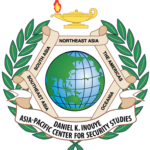India, Vietnam, and the Philippines aren’t forming an alliance. They’re shaping a new kind of multilateralism—flexible, layered, and grounded in the realities of a multipolar world.
As the Indo-Pacific’s front-page rivalries—between the United States and China, or over Taiwan and the South China Sea—continue to shape global headlines, a quieter, steadier shift is unfolding below the surface. India, Vietnam, and the Philippines are slowly converging—not through formal treaties or sweeping declarations, but through a calculated pattern of choices designed to expand strategic space, hedge against coercion, and preserve autonomy.
There is no alliance here. No unified command, no charter. But this is not aimless drift either. What is emerging is a distinct form of coalition-building, rooted in the logic of a multipolar world—a world where power is distributed across many centers, and where influence comes from strategic convergence more than military blocs. In this context, the India–Vietnam–Philippines triangle reflects a pragmatic adaptation to a world order that is neither unipolar nor bipolar, but unsettled.
India’s maritime turn has been one of the more significant shifts in regional posture. Long viewed as a continental power, India has steadily increased its naval presence and partnerships across Southeast Asia. The 2020 border crisis with China prompted a more assertive strategic posture, pushing India to harden its “Act East” policy. What was once centered on economic integration and diplomatic outreach is now backed by defense exports, naval exercises, and capacity-building initiatives.
The BrahMos missile sale to the Philippines – coming in the year that marks the 75th anniversary of diplomatic relations between India and the Philippines – for instance, is not just a transaction—it’s a signal. So is India’s work in training Vietnamese submarine crews and offering port development support. These steps reflect not just ambition but alignment: a quiet understanding that regional stability depends on distributed deterrence, not dependency.
Amid Washington’s broader efforts to reinforce deterrence and strengthen regional resilience—through forward posture, supply chain security, and a distributed defense presence—the quiet convergence among India, Vietnam, and the Philippines provides a complementary arc of regional resilience. It aligns with U.S. strategy in effect: complicating coercion, reinforcing maritime norms, and anchoring stability in contested waters.
Vietnam, for its part, continues to walk its careful line. The “Four No’s” doctrine—no military alliances, no foreign bases, no alignment with one power against another, and no use of force in international relations—gives Hanoi the flexibility to deepen cooperation without formal alignment. In that space, ties with India have grown—from naval patrols to satellite cooperation. For Vietnam, this is a form of multilateralism by design: low-key, interest-based, and sovereignty-conscious.
In Manila, President Ferdinand Marcos Jr. is steering Philippine foreign policy back toward a stronger security orientation. While its alliance with the United States remains foundational, the Philippines is also seeking diversification. Its proposal to expand the “Squad” (currently comprising the U.S., Japan, Australia, and the Philippines) to include India and South Korea suggests a broader search for partnerships that reduce risk without locking into rigid structures.
This, too, is a kind of multipolar logic—a recognition that relying on a single guarantor is risky in a fluid order. India’s growing presence—seen as less polarizing than U.S.-China dynamics—makes it a useful partner for states seeking strategic depth without formal dependence.
Elsewhere in Southeast Asia, the ripple effects are clear. Indonesia has stepped up maritime coordination with India. Thailand, at the sixth BIMSTEC Summit, upgraded ties with India to a strategic partnership. These moves suggest that while the India–Vietnam–Philippines axis may be the sharpest edge of this trend, others are taking note. What is emerging is not a singular bloc, but a network—a multilateral framework of quiet convergence, rooted in shared concern and strategic caution.
This shift is especially relevant at a time when traditional multilateral institutions appear paralyzed. The UN Security Council is deadlocked. WTO reform has stalled. ASEAN remains central but is under strain. In this context, minilateralism—small, focused groupings of like-minded states—is gaining traction. The India–Vietnam–Philippines triangle fits this mold.
India’s bilateral ties with ASEAN maritime states—Indonesia and Thailand among them—remain important. But the trilateral synergy with Vietnam and the Philippines stands apart in its defense-centric logic. These three states face the most direct forms of coercive pressure and have responded with calibrated alignment. They are not rejecting multilateralism; they are remaking it in their own image—pragmatic, self-reliant, and suited to an era of overlapping threats.
The BIMSTEC summit’s “Bangkok Vision 2030” further illustrates this shift. New agreements on maritime transport, digital cooperation, and disaster preparedness highlight a move toward regional self-help. India’s role—via infrastructure projects, cybersecurity cooperation, and regional capacity-building—underlines its intention to act as a node, not a hub. This is multilateralism adapted for multipolarity: less dependent on any one power, more embedded in regional realities.
This architecture is not without friction. Vietnam remains wary of over-alignment. The Philippines’ trajectory has historically swung with leadership changes. India remains cautious about overextension. And no triangular cooperation, however calibrated, can erase the structural imbalance that China’s size and leverage create.
But that’s not the point. This isn’t about counterbalancing China, or building a new alliance system. It’s about complicating coercion, raising reputational and operational costs, and reinforcing the idea that even smaller powers have agency. That, too, is a form of deterrence—one not dependent on firepower alone, but on the quiet consistency of shared purpose.
As the Indo-Pacific becomes more contested, more multipolar, and more complex, this kind of strategic hedging may prove to be the most resilient form of cooperation. Not a doctrine, not a bloc, but a set of relationships that can expand, adapt, and respond—anchored not in ideology, but in realism.
India, Vietnam, and the Philippines are not trying to reshape the world. They are trying to survive and thrive in it—one hedge at a time.
Published: April 16, 2025
Category: Perspectives
Volume: 26 - 2025
Author: Shyam Tekwani






Thanks, Shyam Tekwani.
A nuanced shift toward adaptive multilateralism appears promising. Encouraging institutional support could reinforce its resilience.